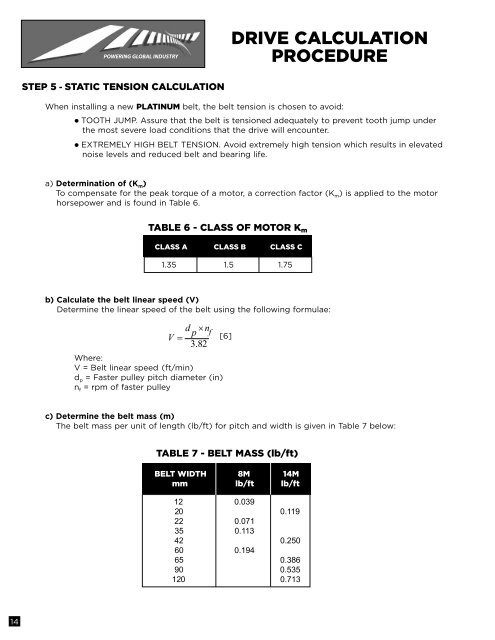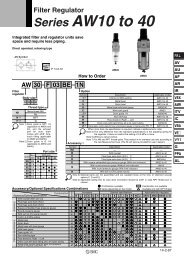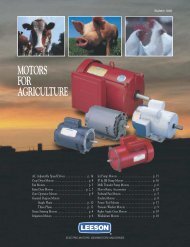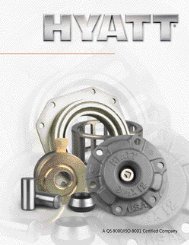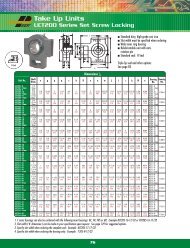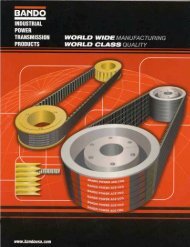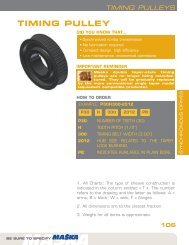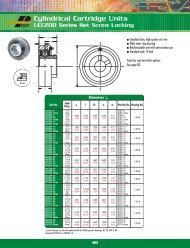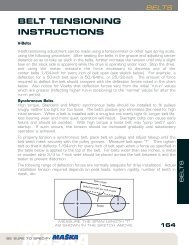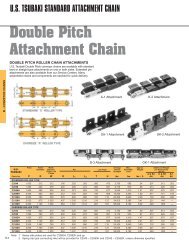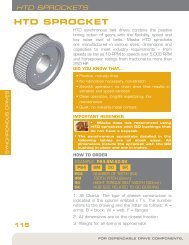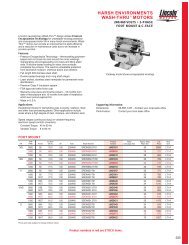Platinum Belt Design Manual - Jason Industrial
Platinum Belt Design Manual - Jason Industrial
Platinum Belt Design Manual - Jason Industrial
Create successful ePaper yourself
Turn your PDF publications into a flip-book with our unique Google optimized e-Paper software.
POWERING GLOBAL INDUSTRY<br />
DRIVE CALCULATION<br />
PROCEDURE<br />
STEP 5 - STATIC TENSION CALCULATION<br />
When installing a new PLATINUM belt, the belt tension is chosen to avoid:<br />
• TOOTH JUMP. Assure that the belt is tensioned adequately to prevent tooth jump under<br />
the most severe load conditions that the drive will encounter.<br />
• EXTREMELY HIGH BELT TENSION. Avoid extremely high tension which results in elevated<br />
noise levels and reduced belt and bearing life.<br />
a) Determination of (K m )<br />
To compensate for the peak torque of a motor, a correction factor (K m ) is applied to the motor<br />
horsepower and is found in Table 6.<br />
TABLE 6 - CLASS OF MOTOR K m<br />
CLASS A CLASS B CLASS C<br />
1.35 1.5 1.75<br />
b) Calculate the belt linear speed (V)<br />
Determine the linear speed of the belt using the following formulae:<br />
d<br />
p<br />
n<br />
V<br />
1f<br />
<br />
3.82<br />
Where:<br />
V = <strong>Belt</strong> linear speed (ft/min)<br />
d p = Faster pulley pitch diameter (in)<br />
n f = rpm of faster pulley<br />
[6]<br />
c) Determine the belt mass (m)<br />
The belt mass per unit of length (lb/ft) for pitch and width is given in Table 7 below:<br />
TABLE 7 - BELT MASS (lb/ft)<br />
BELT WIDTH 8M 14M<br />
mm lb/ft lb/ft<br />
12 0.039<br />
20 0.119<br />
22 0.071<br />
35 0.113<br />
42 0.250<br />
60 0.194<br />
65 0.386<br />
90 0.535<br />
120 0.713<br />
14


